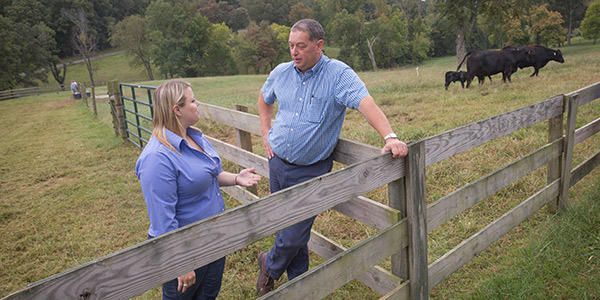
 Department of Conservation and Recreation
Department of Conservation and Recreation
Conserve. Protect. Enjoy.
 Department of Conservation and Recreation
Department of Conservation and Recreation

Use the table below the map to find your Soil and Water Conservation District.
Download the District Directory
Click the map to view a larger version.
| No. | SWCDs | Locality |
|---|---|---|
| 01 | Tidewater | Gloucester; Mathews; Middlesex |
| 02 | Thomas Jefferson: (Charlottesville) | Albemarle; Fluvanna; Louisa; Nelson; Charlottesville (City) |
| 03 | Southside | Charlotte; Lunenburg |
| 04 | Natural Bridge: (Buena Vista, Lexington) | Buena Vista (City); Lexington (City); Rockbridge |
| 05 | Piedmont | Amelia; Nottoway; Prince Edward |
| 06 | Blue Ridge; (Roanoke) | Franklin; Henry; Roanoke; Roanoke (City) |
| 07 | Culpeper | Culpeper; Greene; Madison; Orange; Rappahannock |
| 08 | Northern Neck | Lancaster; Northumberland; Richmond; Westmoreland |
| 09 | Shenandoah Valley: (Harrisonburg) | Harrisonburg (City); Page; Rockingham |
| 10 | Robert E. Lee (Lynchburg) | Amherst; Appomattox; Lynchburg (City) |
| 11 | New River (Galax) | Carroll; Galax (City); Grayson |
| 12 | James River | Chesterfield; Prince George |
| 13 | Lord Fairfax: (Winchester) | Clarke; Frederick; Shenandoah; Warren; Winchester (City) |
| 14 | Skyline | Floyd; Giles; Montgomery; Pulaski |
| 15 | Peanut (Suffolk) | Isle of Wight; Suffolk (City); Surry |
| 16 | Mountain (Covington) | Alleghany; Bath; Covington (City); Highland |
| 17 | Tri-County/City (Fredericksburg) | Fredericksburg (City); King George; Spotsylvania; Stafford |
| 18 | Colonial (Williamsburg) | Charles City; James City; New Kent; Williamsburg (City); York |
| 19 | Chowan Basin | Greensville; Southampton; Sussex |
| 20 | Eastern Shore | Accomack; Northampton |
| 21 | Northern Virginia | Fairfax |
| 22 | Virginia Dare (Chesapeake, Virginia Beach) | Chesapeake (City); Virginia Beach (City) |
| 23 | Holston River | Washington |
| 24 | Daniel Boone | Lee |
| 25 | Clinch Valley | Russell |
| 26 | Scott County | Scott |
| 27 | Lonesome Pine | Dickenson; Wise |
| 28 | Evergreen | Smyth |
| 29 | Tazewell | Tazewell |
| 30 | Hanover-Caroline | Caroline; Hanover |
| 31 | Pittsylvania | Pittsylvania |
| 32 | John Marshall | Fauquier |
| 33 | Halifax | Halifax |
| 34 | Peaks of Otter (Bedford) | Bedford; Bedford (City) |
| 35 | Prince William | Prince William |
| 36 | Loudoun | Loudoun |
| 37 | Big Walker | Bland; Wythe |
| 38 | Monacan | Goochland; Powhatan |
| 39 | Peter Francisco | Buckingham; Cumberland |
| 40 | Henricopolis | Henrico |
| 41 | Headwaters (Staunton, Waynesboro) | Augusta; Staunton (City); Waynesboro (City) |
| 42 | Appomattox River: (Petersburg) | Dinwiddie; Petersburg (City) |
| 43 | Three Rivers | Essex; King & Queen; King William |
| 44 | Patrick | Patrick |
| 45 | Mountain Castles | Botetourt; Craig |
| 46 | Lake Country | Brunswick; Mecklenburg |
| 47 | Big Sandy | Buchanan |
Note: Cities within SWCDs are listed in parentheses after the appropriate district.
Soil and water conservation districts (SWCDs) were established in the 1930s to develop comprehensive programs and plans to conserve soil resources, control and prevent soil erosion, prevent floods, and conserve, develop, utilize and dispose of water. Today, 47 districts serve as local resources for residents in nearly all Virginia localities. Districts, which are political subdivisions of the state, manage conservation programs, employ staff and deliver conservation services free of charge.
Since the mid-1980s, DCR has relied heavily on districts to help deliver many programs aimed at controlling and preventing nonpoint source (NPS) pollution, often on a hydrologic unit basis. With their volunteer boards and more than 150 full- and part-time technical and administrative employees, districts provide a valuable delivery system for Virginia's statewide nonpoint source pollution prevention programs.
Nearly all DCR staff members working in soil and water conservation programs interact with and provide support to districts. Some have the primary responsibilities of technical and administrative support. DCR conservation district coordinators (CDCs) serve as liaisons between the commonwealth and districts. These coordinators interact daily with district directors and employees, participate at district functions, assist with personnel management matters, oversee fiscal management, and guide NPS programs and activities.
In addition, DCR employees carry out the responsibilities of the Virginia Soil and Water Conservation Board. These include administering district financial appropriations, overseeing director elections and appointments and district boundary realignment, facilitating the implementation of technical programs among districts, and fostering cooperative working arrangements with local, state and federal agencies.
In DCR's central office, staff members develop and coordinate consistent guidance for districts concerning many administrative, financial and programmatic issues. Examples of this delivery arrangement include financial grants to districts and administration of the Virginia Agricultural BMP Cost-Share Program. DCR helps districts prepare four-year (long-term) plans, promote services, employ staff, set performance expectations, perform audits, obtain liability and bonding insurance, conduct award programs, manage financial data and orient new directors to their official duties.
Key district NPS control and prevention efforts are:

